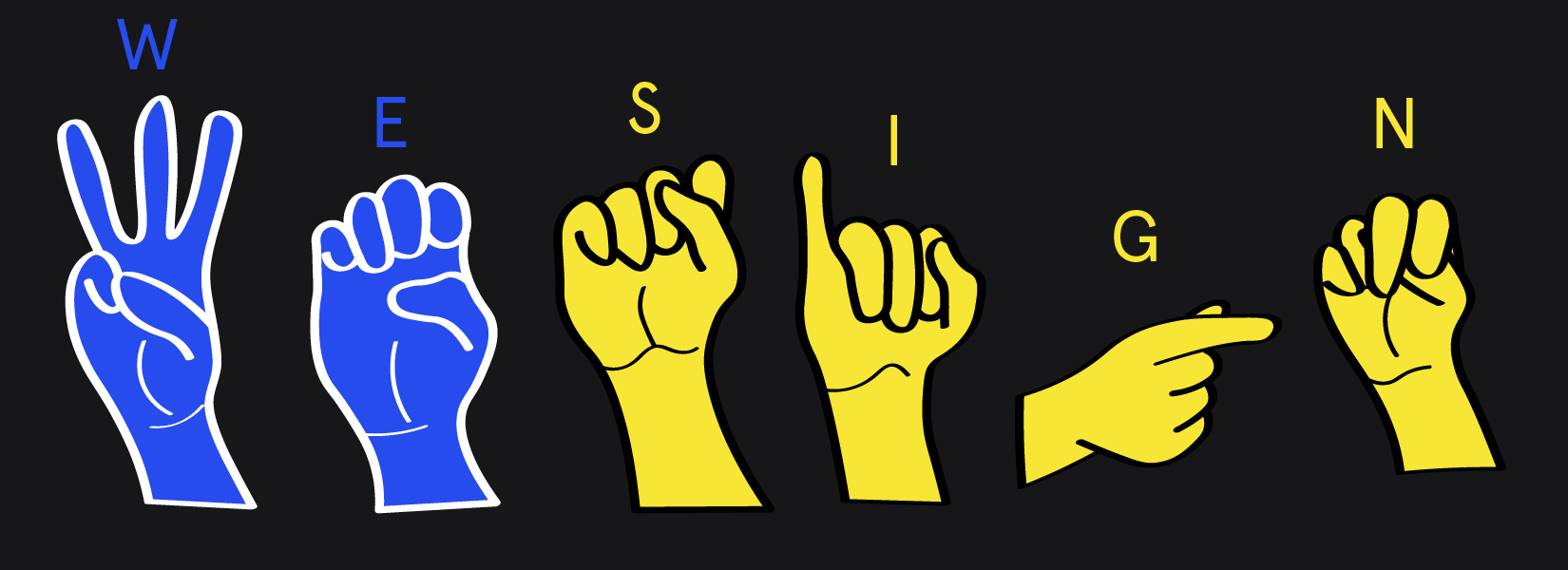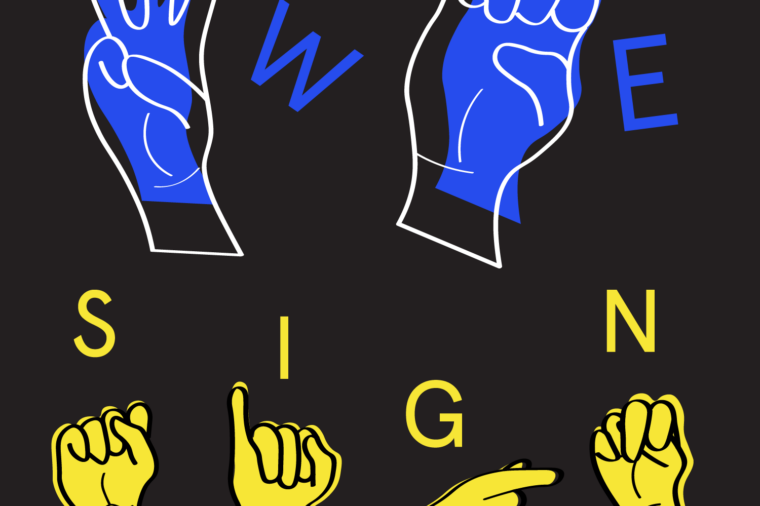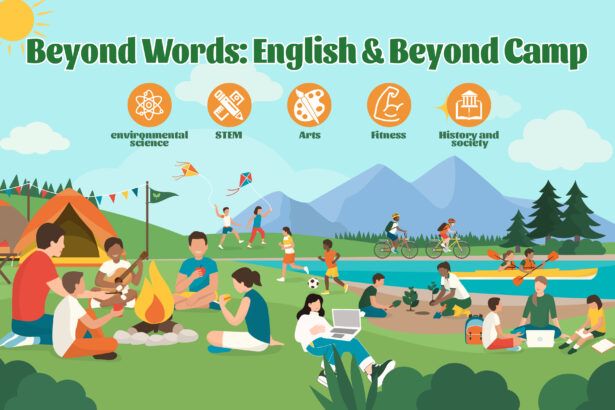WE SIGN started with the idea of integrating ASL learning into the higher education curriculum. This project focuses on nonverbal communication, transferable knowledge, and embodied cognition, aiming to explore whether skills acquired in ASL can be applied to other fields of study and how to design an inclusive and engaging ASL learning experience.
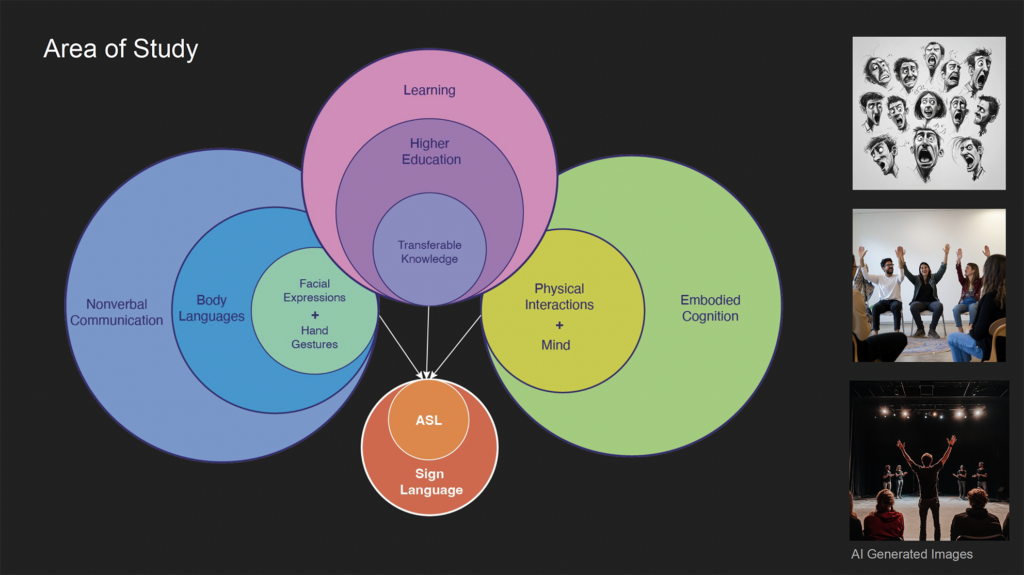
BACKGROUND
The idea for We SIGN originated from my thesis research three years ago during my first master’s degree, where I explored the development of a taxonomy system for hand motions. This prompted me to explore sign language and gain a deeper understanding of nonverbal communication and how hand gestures evolved into a formal language. Following that, I designed an experimental online course called “Exploration of the Five Senses,” which included a topic on learning Chinese Sign Language (CSL). In 2022-2023, I led a cohort of 16 participants (including teachers, parents, and professionals from various industries), and we explored and learned CSL together. What I found particularly interesting was that most participants found learning sign language enjoyable; they felt it helped them connect better with others and expressed curiosity about learning more (e.g., the history of CSL and the rationale behind certain finger spellings). Therefore, I decided to further explore sign language in the PCE, aiming to bridge the gaps between my previous experiences and what I am learning at HGSE.
MIND MAP
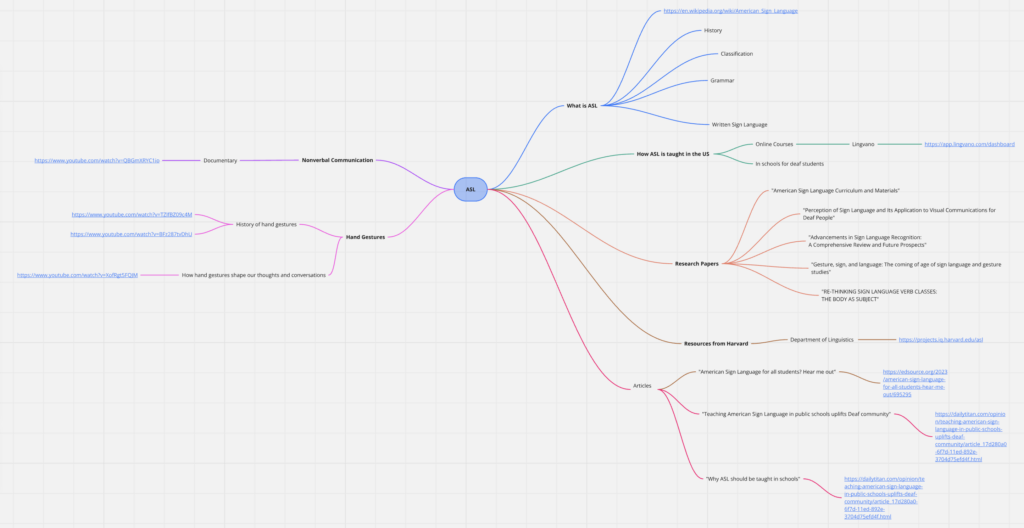
METHODOLOGY
Interview with Subject Experts
I interviewed Jessica Scott, an ASL expert and faculty member in the Deaf Education department at the Georgia State University. She is also a former HGSE graduate. She provided valuable advice on resources I can look into, questions I should consider for my project, and emphasized the importance of reaching out and collaborating with people from the deaf community:
- What makes my course different from what’s already out there? Why would someone sign up for my course instead of the ones that already exist?
- People often think that ASL is only about hand movements, but much of the grammar actually comes from facial expressions and the way your body moves.
If this course is going to be public-facing that people can use, you absolutely have to connect with a Deaf person and have them help you. There are a lot of hearing people that try to design learning tools for sign language and don’t know sign language, therefore do a really bad job. There’s a very strong backlash in the Deaf community against hearing people doing this sort of work without collaborating with the Deaf person.
— Jessica Scott
I interviewed Sean McCauley, a Deaf ASL teacher who has attended many of Harvard’s Deaf Awareness Club events since 2012 and participated in its Deaf Lives Panel in 2017. He shared his personal experiences as a Deaf person and spoke about misconceptions about ASL, his teaching experience, and Deaf culture.
A big misconception I have seen in the last few years is that people are convinced that ASL can be learned like magic. Because they see people signing fast on TV. Then when they go in classroom and are disappointed it’s not same as they see on television or movie…People can not learn ASL so fast. It takes time.
— Sean McCauley
User Research (Surveys + Interviews)
To gather both quantitative and qualitative data, I conducted seven interviews and surveys with potential learners who expressed interest in learning ASL. These participants included my LDIT peers, my TF, and an HGSE staff member. The data collected included demographic details, preferred learning formats and methods, knowledge of sign language, factors that sparked their interest in learning ASL, learning goals, and their views on why it’s essential for more people to learn ASL.
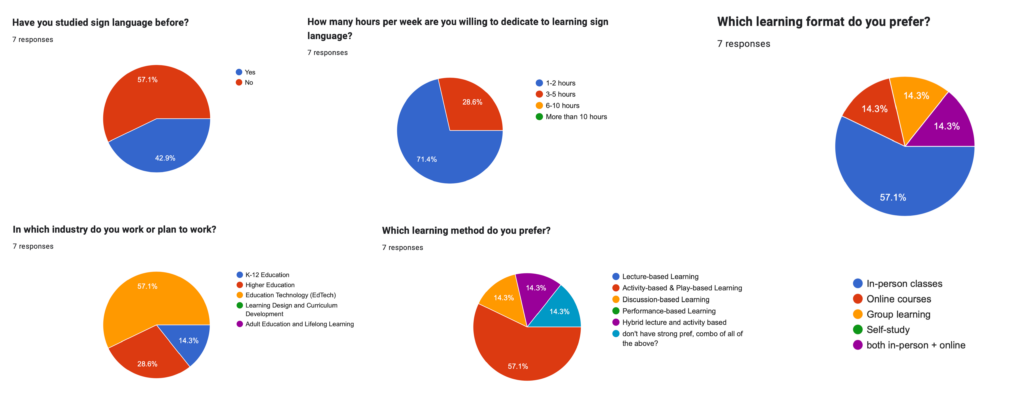
Study after study shows that teaching deaf babies Sign Language as their first language, does not impede their development, actually helps it.
I’ve always been interested in sort of like using symbols to represent information, like looking at maps, charts and graphs and things where I don’t have to listen to something, I can use my eyes.
I think it was always people with hearing loss who needed to adapt to me, which I thought was, Oh, I don’t really like that, I should be also (adapting to them).
What if one day doing ASL is normalized? What if one day you’re not even impressed by someone’s using ASL?
CHALLENGES FACED
The biggest challenges I faced during this project were finding ASL experts and Deaf individuals to talk to. I emailed many people but did not receive responses. It might seem odd for someone without any background or knowledge of ASL to want to design a course in it. It’s common for people to question your intentions or motivations when pursuing something outside your expertise.
Where there are challenges, there are also opportunities. This self-directed learning journey allowed me to find new resources through my network and not be afraid of trying.
LOOKING AHEAD
My next steps for this project are to explore the intersection between nonverbal communication and embodied cognition. I will further the user research and interview potential learners with diverse demographic backgrounds, study a couple of ASL curricula in detail, lead ASL learning workshops, and continue exploring my research questions about whether skills acquired in ASL can be applied to other fields of study.
